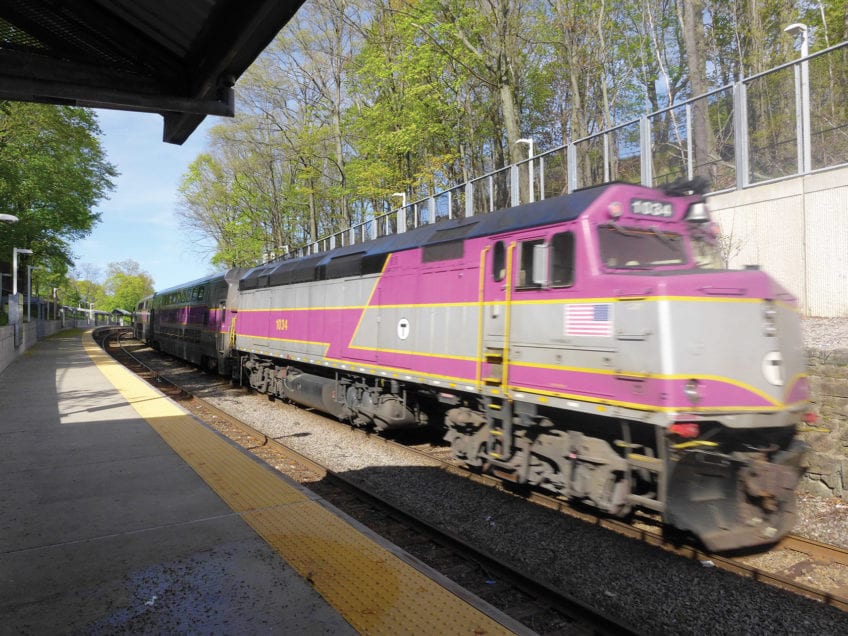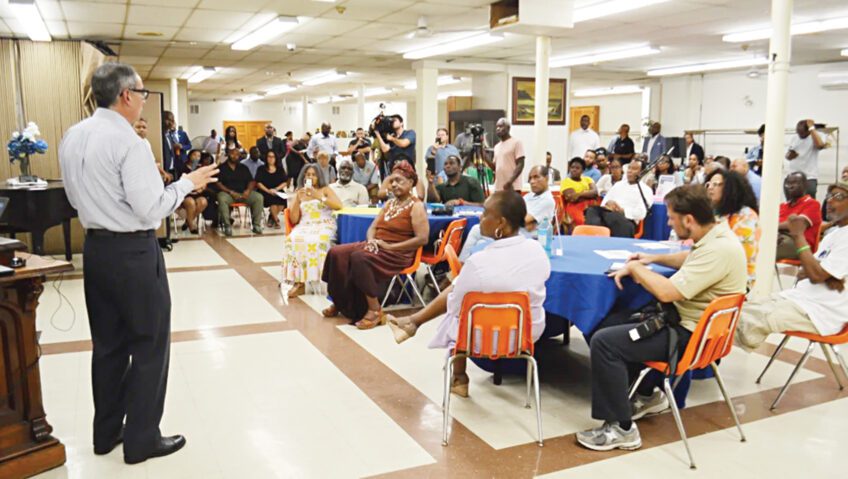
Horizons are irresistible motifs in photographs and paintings. These meeting places of earth and sky inspire longing and hope and invite contemplation of what is beyond our known and familiar world. Horizons are a frequent presence in the photographs of Catherine Opie that are on view through Sept. 5 at the Institute of Contemporary Art/Boston (ICA).
Entitled “Catherine Opie: Empty and Full” and organized by ICA Chief Curator Helen Molesworth, the exhibition presents 45 images made between 2006 and 2010 by this prominent American photographer. They may seem to have little in common: One set of images documents her 10-day journey east across the Pacific on a container ship from Busan, Korea, to Long Beach, Calif. in 2009 through photographs of each day’s sunrise and sunset. Other photographs form an odyssey through America’s fractious social landscape.
Together, they show America both in its outer reach across oceans and inner cacophony. They also offer a fascinating sampling of the approach of Opie, who with subtlety, wit and inventiveness uses the flat, neutral, repetitive formality of a grid to contemplate our differences and common ground.
Opie’s trans-Pacific cycle begins and ends with a large, horizontal panoramic view of Opie’s points of departure and arrival. Opie renders the port of Busan as a splendid collision of commerce, nature, earth and sky. A strip mine glistens in the sun over the harbor, an erector set wonderland of red cranes, yellow scaffolding and shipment containers marked by Korean corporate logos. Opie’s image of Long Beach, identical in dimension, shows another port wedged into low hills. Here, the containers are labeled with English names.
Between these two horizontal panoramas are 20 vertical images, each about four feet high and just over three feet wide. Within this rigorous format, Opie’s show pairs an image of each day’s sunrise and sunset over her 10-day journey. The sameness of the format and subject — each image has the sun at its center — allows Opie to reveal the wondrous variations in these daily events.
Marking time and place mid-sea, Opie used her tripod-mounted camera as a kind of sextant. Assisted by the ship’s navigator in locating the sun when the sky was clouded over, Opie spent three hours at dawn and again at sunset in her picture-taking ritual. As the ship tilted from one side to another, mid-way, when the horizon was level in her viewfinder, she would click the shutter.
More like portraits than landscapes, the resulting images are sensuous, close-up encounters with the sea and sky, each bisected by a visible or implicit horizon. Like the contemplative color field paintings of Mark Rothko in the 1950s, Opie’s semi-abstract seascapes conjure a sense of mystery; but they are unadorned, un-manipulated recordings of nature’s own geometry, textures and hues. Ripples of water evoke layers of pigment in a painting by Titian. The sun’s reflection on the sea forms an extended triangle. Hues of rose, purple, blue, lavender and gold radiate from the meeting of sea and sky.
Shifting from nature’s drama to the street theater of public gatherings, other photographs in the exhibition are scenes from a variety of political and social events. Like the images of her trans-Pacific journey, Opie’s documentary images adhere to a common form. Each is a horizontal composition. Five are about four feet wide and three feet high. The rest are two feet wide and 16 or 18 inches high. Unlike the Pacific series, the consistency of format reveals a numbing sameness among the scenes despite the seeming variety of their subject matter — a cacophonous mix of rallies and assemblies.
Oceans of people fill the frames, along with their props: an outsider artist’s arsenal of self-made signs, posters hats and outfits. In this sea of faces, Opie gets her bearings not by a single-minded focus on the central orb of our solar system but instead, on a figure or two in the crowd, a gesture, or the words on a poster or hat. Although people are the subject, these images are more like landscapes than portraits. They step back and take in each scene with a wide, long view that underscores similarities rather than differences among the gatherings. Among these similarities is the dominant palette of red, white and blue as groups with very different agendas deck themselves in flags to press their case.
Arranged in loosely chronological order, groups of images show a 2006 march for immigration rights, a 2007 march protesting the invasion of Iraq and three years later, a rally for same-sex marriage rights — all in Los Angeles. In the photograph of the gay marriage rally, two men wearing white tuxedos look like figures ready to crown a wedding cake. Opposite photographs from a 2010 Tea Party rally in San Diego are images of the gathering on the Mall for President Barack Obama’s inauguration that include three iconic portraits. Here, Opie’s flat documentary approach rises to lyricism.
The installation concludes with a series of droll juxtapositions. Scenes from the 2010 Boy Scout Jamboree mingle with images from the 2010 Michigan Womyn’s Music Festival. Again, Opie uses formal consistency to suggest unexpected similarities and differences among her subjects. Horizons feature prominently in two large landscapes. In one, the thin white outline of the women’s volleyball net and a few tents form the dividing line between a row of trees and an overgrown field of weeds. Its mate in size shows the Boy Scout encampment. Mid-way between the sky and a grassy field is a line of tents in uniform shades of blue and white and a tidy row of boys in camp chairs. Another image shows the scouts’ matching blue tents, arranged in military order within a vast field. Nearby is a photograph of the women’s camp, a free-form mix of tents nestled among trees.
As a chronicler of contemporary America, Opie conveys its fractious variety as well as its unexpected hints of common ground.






